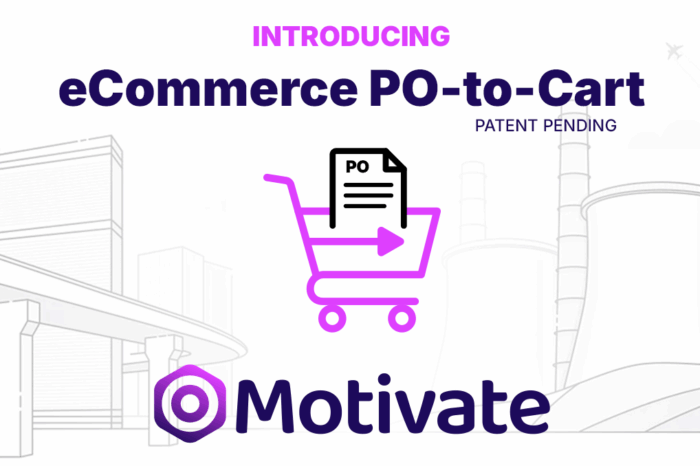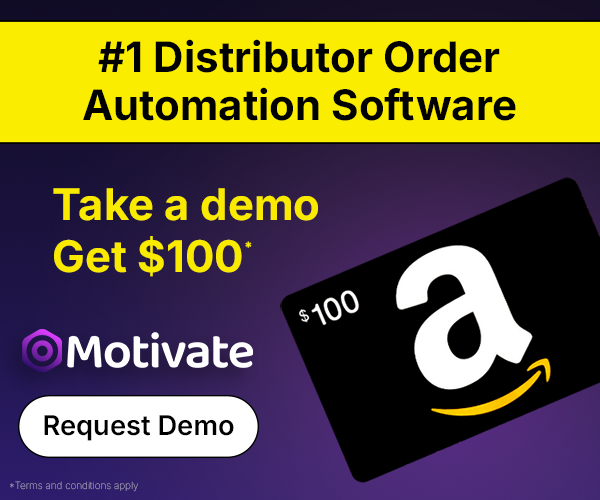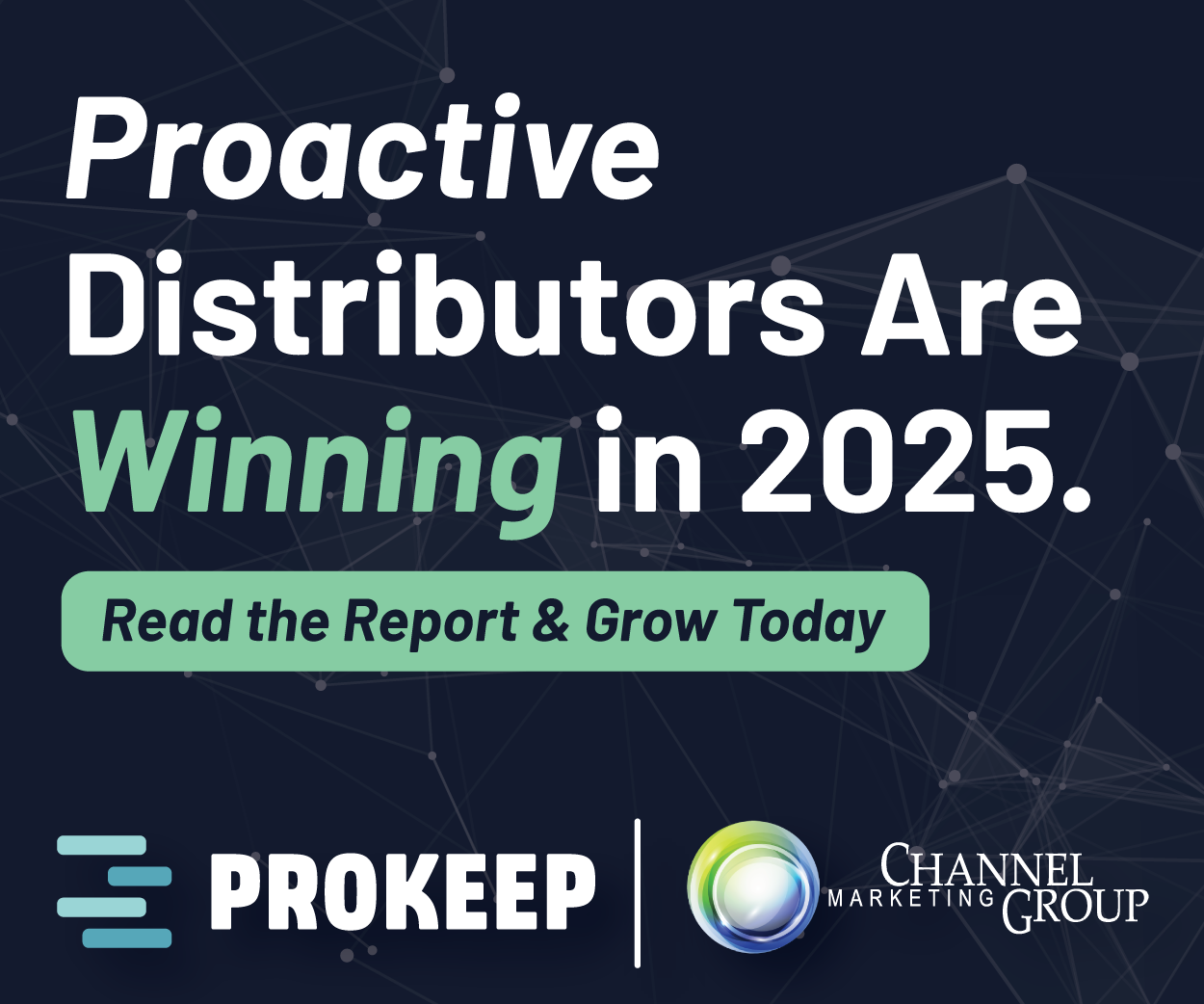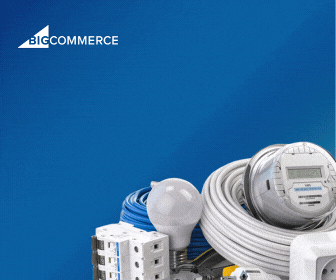6 Take Aways from State of eCommerce Report
 Earlier this year Channel Marketing Group reached out to electrical and HVAC buyers to better understand their usage of the web … from information gathering to purchasing. The 2025 State of eCommerce Report was a follow-up to a similar initiative in 2018. While it was sponsored by BigCommerce, another participate was Access Solutions, as they built the site we used to support sharing the report, www.ecommerce4distributors.com. Access Solutions also helps clients select and implement BigCommerce applications.
Earlier this year Channel Marketing Group reached out to electrical and HVAC buyers to better understand their usage of the web … from information gathering to purchasing. The 2025 State of eCommerce Report was a follow-up to a similar initiative in 2018. While it was sponsored by BigCommerce, another participate was Access Solutions, as they built the site we used to support sharing the report, www.ecommerce4distributors.com. Access Solutions also helps clients select and implement BigCommerce applications.
Given Access’ involvement, I asked Dmitry Kon, Access’ Chief Solutions Architect, for his takeaways from the report.
Beyond Transactions: How Distribution Leaders Misunderstand the Strategic Role of eCommerce in Digital Transformation
“The electrical distribution supply sector is unequivocally undergoing a profound and unavoidable digital transformation – a reality Access Solutions witnessed firsthand as a dedicated B2B web implementation agency deeply involved in this shift.
Yet in management meetings across the sector, executives continue to approach this transformation through a dangerously narrow lens, viewing e-commerce platforms as standalone solutions rather than integral components of a comprehensive business strategy.
This fundamental misconception at the leadership level is creating a widening gap between corporate digital investments and actual customer behavior, ultimately threatening market position and customer loyalty.
When 18.6% of your B2B buyers actively avoid talking to salespeople and 58% of purchases happen outside traditional distributor relationships, it’s time for boardroom conversations about digital strategy to fundamentally change.
In reviewing the report that BigCommerce partnered with Channel Marketing Group, findings, in my opinion, reveal not just evolving buyer preferences, but a series of strategic misunderstandings that require electrical supply leaders to fundamentally rethink their approach to digital transformation.
What emerges is a clear mandate: e-commerce is not the destination but rather one element of an integrated digital strategy that must align sales teams, marketing efforts, operational systems, and customer touchpoints into a cohesive experience.
The companies that grasp this distinction will capture the 70% of order volume currently eluding their digital channels; those that don’t will watch their customers quietly migrate to competitors who understand that true digital transformation extends far beyond the shopping cart.
-
The Digital Adoption Paradox: More Buyers, Less Volume
One key finding that challenges conventional thinking is the disparity between digital adoption rates and the actual volume of purchases conducted online.
The survey indicates that 62.3% of buyers have purchased some electrical, HVAC, or industrial supply products online, representing a substantial 702% increase in digital purchases since 2018, when only 45% of buyers had made purchases digitally. This widespread digital engagement clearly signals that buyers have embraced digital channels.
However, a closer examination reveals a critical nuance: these purchases represent only 30% of buyers’ total order volume.
This data suggests that while digital channels are widely used for convenience and certain types of transactions, the majority of order volume continues to occur offline. Distributors may be under the misconception that high digital adoption automatically equates to capturing the full digital wallet share. Buyers might be leveraging digital for routine or smaller transactions but revert to traditional methods for complex, high-value, or bulk orders, possibly due to a lack of digital workflows that adequately support quoting, spec uploads, or custom pricing.
Distributors must recognize this paradox and focus on enabling complex, relationship-driven interactions within their digital platforms to fully capitalize on online engagement. (ElectricalTrends note: Motivate is helping distributors find success in capturing these more complex, and multi-line item, orders.)
-
The Silent Competitors: Beyond Your Traditional Rivals
Another surprising insight concerns the expanding competitive landscape, which distributors may be underestimating.
The research shows that over 58% of purchases now occur outside traditional distributor relationships. While 59% of the time the competitor is another distributor, buyers frequently turn to other sources. Furthermore, 66% of B2B buyers perceive online companies like Amazon Business, Grainger, Fastenal, and Home Depot as “viable suppliers for most of their material needs”. The survey mentioned over 100 different companies as purchasing sources.
This indicates that customer loyalty is no longer a given, and the market is becoming increasingly fragmented. Distributors may be mistakenly focusing only on direct, traditional rivals, overlooking large-scale online retailers and multi-line distributors. Buyers are actively diversifying their sourcing.
To address this, distributors cannot rely solely on established relationships. They must identify what these non-traditional competitors excel at – such as complete product data, ease of use, or broad selection – and integrate these strengths into their own digital experience to regain and strengthen customer loyalty in a competitive environment.
-
The Internal Divide: Misaligned Digital Promotion
Despite significant distributor investment in e-commerce platforms, a surprising disconnect often exists internally regarding their promotion. The survey reveals that 52.2% of buyers discover distributor websites through Google. This is notably higher than direct discovery through a salesperson, which is often considered the primary channel by distributors.
This finding suggests that substantial digital investments may be underutilized due to a critical misalignment in internal strategies. Sales teams and marketing efforts are often not effectively promoting or integrating digital channels into their customer interactions, leading buyers to find sites independently through search. Distributors may mistakenly believe that digital transformation is merely a technology implementation; it also requires comprehensive organizational alignment.
Equipping and incentivizing sales teams to champion their e-commerce offerings, alongside optimizing content for search and AI engines, is crucial for maximizing the return on digital investments.
-
Beyond the Cart: The Website as an Information Hub
Distributor websites are often primarily viewed as transactional platforms, but buyer behavior indicates a different primary use. While “ordering material” is a significant use at 48%, it is not the most frequent. Buyers more commonly use distributor websites for “Checking pricing” (67% regularly or very frequently), “Product research” (51%), and “Checking availability” (49%).
This means distributors may be underestimating their website’s role as a vital information and transparency hub during the pre-purchase journey.
If product content is incomplete – missing SKUs, specifications, or accurate images – it directly hinders buyers’ ability to conduct research and can drive them to competitors where data is more complete. Buyers expect B2C-level experiences coupled with B2B-specific features such as personalized pricing and real-time inventory visibility.
Prioritizing robust, accurate, and complete product content, real-time inventory visibility, and personalized pricing will yield greater returns than, for example, overemphasizing less important features like product training/videos, which buyers rated significantly lower (2.60 out of 5). Websites must provide the same level of service buyers receive from their sales representatives, including clear delivery timing, order tracking, and flexible fulfillment options.
-
Mobile’s Missed Opportunity: Disconnecting from On-the-Go Buyers
Today’s B2B buyers are often on the move. The survey found that 48% of buyers place orders from their vehicles, with many also ordering from job sites or their homes. They expect 24/7 access across various devices. However, a significant gap exists: “many distributor websites still fall short when it comes to mobile optimization,” failing to deliver the speed, usability, and “thumb-friendly” navigation field contractors expect.
Distributors may not fully grasp the extent to which their customers operate remotely and the fundamental expectation for mobile accessibility and convenience. This deficiency creates friction and a suboptimal experience during critical moments of need, such as when a contractor requires materials urgently from a job site.
Mobile-first design, speed, and intuitive navigation are not merely beneficial features; they are essential for retaining customers who need to order anytime, anywhere.
Mobile accessibility and ERP connectivity are no longer “nice-to-haves” but fundamental requirements for a seamless digital experience that keeps buyers online.
-
The Unconventional Order: Catering to Self-Serve Preferences
While personal relationships remain important in B2B, a notable segment of buyers actively prefers self-service for certain transactions. A surprising 18.6% of buyers explicitly stated they purchase online because they “Do not have to talk to a salesperson”. Additionally, 24.4% of buyers utilize SMS texts to place orders. (Note: ElectricalTrends supporter Prokeep helps distributors in this area and is holding a webinar on July 16th on SMS as a revenue generation tool.)
This indicates that distributors may be overestimating the universal desire for salesperson interaction for every type of order and potentially underestimating the demand for efficient, self-sufficient options. The prevalence of SMS ordering highlights a demand for quick, informal, and mobile-native methods that may bypass traditional structured channels, driven by a preference to “be self-sufficient and handle myself”.
Distributors need to provide seamless and efficient digital experiences that cater to those who value self-sufficiency and quick transactions. While SMS may seem unconventional, its usage points to a need for low-friction, mobile-first ordering options that could be better integrated into formal systems to enhance reliability and professionalism.
A Path Forward for Digital Investment
The insights from the 2025 State of eCommerce in Electrical and HVAC Buyer Report highlight a clear imperative for distributors:
Digital ordering has become the standard, driven primarily by convenience and the desire to save time.
Buyers expect fast, self-serve options through websites, apps, and even text. If these expectations are not met, buyers are likely to turn to digital-first competitors like Amazon Business or Grainger.
The critical misunderstandings outlined above – regarding order volume, competitive landscape, internal promotion, website utility, mobile optimization, and self-serve preferences – demand a strategic re-evaluation of digital investments. Distributors must move beyond simply having an e-commerce site; they must deliver a digital experience that mirrors the strengths of offline, relationship-driven interactions while offering transparency and convenience at scale.
Focus should be placed on foundational elements such as robust product content, real-time data integration, mobile optimization, and empowering sales teams to champion digital tools. The goal is to build buyer confidence and loyalty by providing a transparent, convenient, and B2B-specific digital experience.
For those ready to take the next step in refining their digital strategy, contact us and I encourage all to request the full report.”
Thoughts
Dmitry shares some interesting observations as to digital commerce success. One of the most important is the integration of an eCommerce mindset within a distributor’s sales and marketing organization. While marketing may have resources assigned to maintaining the site adds your url to all collateral, how is this “product” marketed to convince customers to use it? Which audiences is it marketed to? Is it targeted to those “most likely” to use eCommerce? To those who are currently buying online? And speaking of your sales organization, how is online usage aligned with a salesperson’s account package?
The role of digital will not disappear, it will only increase. Making sure this is a core competency, is embraced as a “service / product” and integrated into to the ethos of your sales and marketing team is important. Understanding if customers are “satisfied” with your offering is important (as if they are not, they may walk all of the business that they do with you to someone else.)
Suggestion – reach out to Dmitry and engage with him to gain an alternative perspective. You’ll walk away with some ideas. And if you are interested in understanding customer eCommerce satisfaction of the level of your customers’ eCommerce adoption, reach out and I can share how Channel Marketing Group can be of service.























